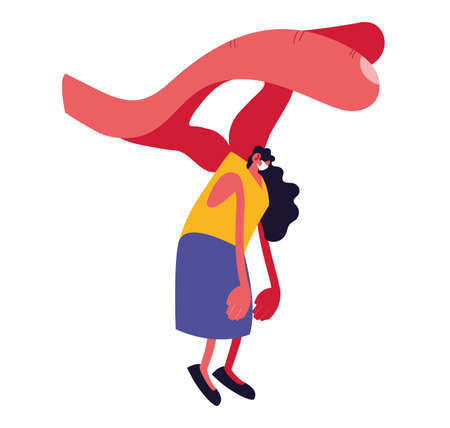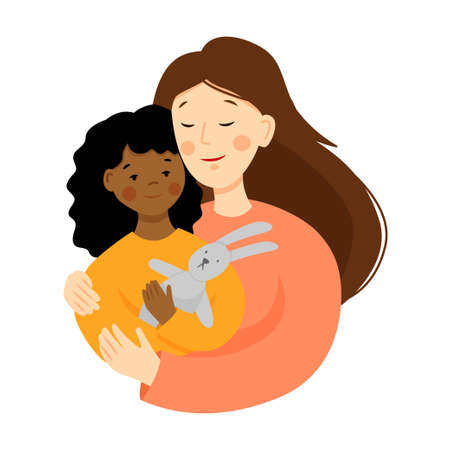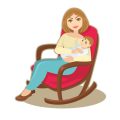1. Planning Your Trip
Let’s be honest—traveling with a baby isn’t a walk in the park, but with some solid planning, it can go smoother than you think. First things first: when booking flights, look for direct routes whenever possible. Layovers mean more hassle, more stuff to carry around, and honestly, more chances for meltdowns (for both baby and parents). If you need to connect, leave enough time between flights so you’re not running across the airport with a stroller and a diaper bag.
Next up is choosing your seats. Bulkhead seats—those right behind the wall or curtain dividing classes—are golden for families. There’s extra legroom and often space for bassinets (but make sure to call the airline ahead to reserve one). If bulkhead isn’t available, try to get an aisle seat so you can get up easily for diaper changes or walks down the aisle when your little one gets fussy.
Timing is everything. Try to book flights that match your baby’s nap schedule or overnight flights if you’re feeling brave. Sometimes flying during their regular sleep time means they’ll snooze through most of the trip—giving you a rare moment to breathe or even catch some Z’s yourself.
And here’s a dad tip: don’t forget to check the airline’s policies about infants. Some airlines let babies under two fly free as lap infants; others charge a percentage of the adult fare. Also, ask about early boarding options so you can settle in before the rush. A little research goes a long way toward making your journey less stressful.
Packing Essentials for Baby
When you’re flying with a baby, what you pack in your carry-on can make or break your trip. Trust me, as a dad who’s been there, you don’t want to be that parent scrambling mid-flight for something you forgot. Here’s a practical rundown of essentials you’ll need to keep your little one comfortable and happy on the plane.
Must-Have Items for Your Carry-On
| Item | Why You Need It | How Many to Pack |
|---|---|---|
| Diapers | You never know when nature will call (and it always does at 30,000 feet) | 1 per hour of travel, plus extras |
| Wipes | For diaper changes, sticky hands, and cleaning surfaces | Travel-size pack |
| Formula/Breast Milk/Bottles | Airports allow you to bring more than the usual liquid limit for babies | Enough for the flight + delays |
| Snacks/Puffs | Keep their mouths busy and their moods up; opt for mess-free snacks | A small variety of favorites |
| Paci/Teething Toy | Soothe ears during takeoff and landing, offer comfort if teething | At least 2 (in case one drops) |
| Change of Clothes (for baby & parent) | Messes happen—be ready for spills or blowouts | 1–2 outfits each |
| Favorite Blanket/Stuffed Animal | A familiar item helps your baby feel safe and sleep better in new surroundings | 1–2 comfort items |
TSA Tips for Traveling Parents
If you’re worried about airport security, know that TSA is used to parents traveling with babies. Just let them know you have formula or breast milk—they’ll screen it separately but won’t give you a hard time. It also helps to pack everything in easy-to-reach zip bags so you’re not holding up the line while searching through your bag.
Dad’s Pro Tip:
Pack extra zip-top bags for dirty diapers and soiled clothes. Trust me—your fellow passengers (and your nose) will thank you.

3. Navigating the Airport
If you’re flying with a baby for the first time, just getting through the airport can feel overwhelming. Trust me, as a dad who’s been there, a little planning goes a long way. Here’s how to make security checks and handling gear like strollers and car seats much less stressful—and even a bit smoother.
Security Checks with a Baby
The TSA is used to seeing families with little ones, so don’t stress too much. You’ll carry your baby through the metal detector (they can’t go through in their car seat or stroller). Liquids for babies—like formula, breast milk, and juice—are allowed in reasonable quantities, but take them out of your bag before screening and let the agent know what you have. I always pack these in clear containers and keep them easily accessible; it makes the process faster and keeps everyone happy.
Stroller and Car Seat Policies
Most airlines in the U.S. let you gate-check your stroller and car seat for free. This means you can use them right up until you board, then pick them up at the gate when you arrive. It’s honestly a lifesaver for tired arms and a fussy baby. Just be sure to tag your gear at check-in or at the gate desk (ask if you’re unsure—they’ve heard every question before). Some families prefer lightweight travel strollers because they fold easily and fit through security x-ray machines, making things even easier.
Making Your Airport Time Smoother
- Arrive Early: Give yourself plenty of time. Everything takes longer with a baby—from parking to diaper changes.
- Use Family Lanes: Many airports have special family lanes at security. These are less rushed and more understanding of wiggly kids.
- Scout Out Play Areas: Some larger U.S. airports have play zones for kids—perfect for letting your baby get some energy out before boarding.
- Pack Smart: Keep essentials like diapers, wipes, snacks, and a change of clothes handy in your carry-on. Trust me—being prepared beats scrambling at 30,000 feet!
Dad Tip:
If your baby gets cranky during waits or lines, don’t sweat it. Most travelers are sympathetic—and you’ll probably meet other parents doing exactly what you are: surviving airport life with little ones!
4. In-Flight Survival Guide
Flying with a baby can feel like running a marathon with a backpack full of surprises. But trust me, with the right prep and attitude, you can make it through those hours in the air with your sanity (mostly) intact. Here’s how to keep your baby comfortable and entertained, deal with ear pressure, manage crying, and hopefully get some naps in—even if you’re flying cross-country or on an overnight red-eye.
Keeping Your Baby Comfortable
The key to a smooth flight is making sure your baby feels secure and cozy. Dress your little one in layers—airplane cabins can be chilly or stuffy, and having options makes life easier. Bring a familiar blanket or lovey; sometimes that one special item from home is all it takes to calm them down.
Quick Comfort Checklist
| Item | Why You Need It |
|---|---|
| Extra clothes | Messes happen—be ready for spills or diaper blowouts. |
| Blanket/lovey | Familiar smells and textures help babies relax. |
| Paci/bottle | Sucking helps with ear pressure (more on that below). |
| Wipes/diapers | You’ll never have enough. Trust me. |
Entertainment Strategies for Little Ones
Boredom is the enemy when you’re stuck at 30,000 feet. Pack a few small toys, board books, or teething rings—just don’t bring anything noisy that’ll drive fellow passengers nuts. Rotate toys so each one feels new. For older babies, simple games like peekaboo or playing with plastic cups from the drink cart work wonders.
Pro Tip:
Download a couple of baby-friendly apps or videos on your phone or tablet before you leave home. Even if you usually limit screen time, desperate times call for desperate measures!
Dealing With Ear Pressure and Crying
The change in air pressure during takeoff and landing can make babies fussy (or downright miserable). Offer a pacifier, bottle, or nurse during ascent and descent—it helps their ears pop naturally. If they cry, remember: most people on the plane have been there too, and headphones exist for a reason! Take deep breaths, stay calm, and focus on soothing your child rather than what other passengers think.
Naps in the Air: Making Sleep Happen
If possible, book flights during nap times. Dim the cabin lights around your seat if you can, use a blackout cover over the car seat or stroller (if allowed), and gently rock or pat your baby to sleep. White noise apps or just the hum of the engines might actually help lull them to sleep—it’s worked for my kids more than once.
In-Flight Nap Toolkit:
- Favorite blanket/swaddle
- White noise app or portable sound machine (on low volume)
- Eye mask (for parents!)
- Treats for yourself—you’ve earned them!
With a little planning and plenty of patience, flying with a baby doesn’t have to be stressful. Remember: every flight is another adventure—and another story to tell when you land.
5. Feeding and Diapering Onboard
Let’s be real: when you’re 30,000 feet in the air with a baby, feeding and diaper changes become a whole new adventure. Here’s how to make it work, dad-style.
Feeding Your Baby on the Plane
If your baby is bottle-fed, make sure to prep bottles ahead of time. The TSA allows formula, breast milk, and baby food in reasonable quantities—even more than 3.4 ounces—so don’t stress about that rule. Just let security know you’ve got baby supplies, and they’ll run them through extra screening if needed. Onboard, ask the flight attendants for hot water to warm up bottles (most are super helpful), or pack a thermos of hot water if you want to control the temperature yourself. If mom is nursing, bring along a light cover or scarf for privacy if she prefers—nobody will blink twice at breastfeeding on a U.S. flight, but comfort is key.
Snack Tips for Older Babies
For babies eating solids, pack easy snacks like puffs, cut fruit, or squeezable yogurt pouches. Avoid messy foods or anything that stains; keep wipes handy for quick clean-ups. Snack time can also help soothe ears during takeoff and landing—sucking and swallowing relieves ear pressure.
Diaper Changes in Airplane Bathrooms
Changing diapers on a plane isn’t anyone’s idea of fun, but it’s totally doable. Most planes have at least one restroom with a fold-down changing table (usually at the back). Ask a flight attendant which bathroom has it as soon as you board—the earlier you go, the cleaner it’ll be. Bring a compact changing pad and a few diapers in your carry-on so you’re not juggling the entire diaper bag in that tiny space. Pack extra plastic bags for used diapers; some folks double-bag to keep things fresh until you can toss them after landing.
Pro Dad Tips:
- Pack more diapers and wipes than you think you’ll need—you never know about delays!
- If there’s turbulence, wait until it smooths out before attempting a change.
- Dress your baby in easy-on, easy-off outfits for quick changes.
Final Thoughts
No matter how prepared you are, sometimes babies will fuss or make a mess—it happens to every parent! Stay calm, smile at your fellow passengers, and remember: most people are more sympathetic than you might think. A little planning goes a long way toward making feeding and diapering on the plane as smooth as possible.
6. Dealing with Challenges
Let’s face it—no matter how well you plan, flying with a baby can throw some curveballs your way. Here’s what I’ve learned as a dad who’s been there, done that, and survived to tell the tale.
What to Do If Your Baby Gets Fussy
If your little one starts to fuss mid-flight, don’t panic. Babies cry—it’s normal. First, check if they’re hungry, need a diaper change, or just want to move around. Sometimes, a quick walk up and down the aisle (if the seatbelt sign is off) works wonders. If you’re nursing or bottle-feeding during takeoff and landing, it can help with ear pressure too. Don’t be afraid to whip out a favorite toy or download some soothing music or white noise on your phone. Most people on the plane have been in your shoes before—or at least know someone who has.
Handling Delays Like a Pro
Flight delays are tough for everyone, but even tougher with a baby in tow. My advice? Always pack extra diapers, wipes, formula, snacks, and a change of clothes (for both of you). If you’re stuck on the ground longer than expected, try to keep your baby entertained with new toys or books you’ve saved for just this moment. Walk around the airport terminal if possible—babies love a change of scenery just as much as we do.
Staying Calm When Things Don’t Go as Planned
This is probably the most important thing: stay calm. Babies pick up on our stress levels. Take deep breaths and remind yourself that this flight won’t last forever. Most folks understand that traveling with young kids isn’t easy. If anyone gives you “the look,” just smile and focus on your child—they’re your priority. Don’t hesitate to ask flight attendants for help—they’ve seen it all and are usually happy to lend a hand.
Dad’s Final Word
At the end of the day, remember: you’re making memories—even if they don’t all go according to plan. Every challenge is just another story for later. Hang in there—you’ve got this!


